#water conservation
Text
Legit though, we should start turning ecosystem restoration and work to make our world more tolerant to the effects of climate change into annual holidays and festivals
Like how just about every culture used to have festivals to celebrate the beginning of the harvest or its end, or the beginning of planting, or how whole communities used to host barn raisings and quilting bees - everyone coming together at once to turn the work of months or years into the work of a few days
Humble suggestions for festival types:
Goat festival
Besides controlled burns (which you can't do if there's too much dead brush), the fastest, most effective, and most cost-efficient way to clear brush before fire season - esp really heavy dead brush - is to just. Put a bunch of goats on your land for a few days!
Remember that Shark Tank competitor who wanted to start a goat rental company, and everyone was like wtf? There was even a whole John Oliver bit making fun of the idea? Well THAT JUST PROVES THEY'RE FROM NICE WET PLACES, because goat rental companies are totally a thing, and they're great.
So like. Why don't we have a weekend where everyone with goats just takes those goats to the nearest land that needs a ton of clearing? Public officials could put up maps of where on public lands grazing is needed, and where it definitely shouldn't happen. Farmers and people/groups with a lot of acres that need clearing can post Goat Requests.
Little kids can make goat-themed crafts and give the goats lots of pets or treats at the end of the day for doing such a good job. Volunteers can help wrangle things so goats don't get where they're not supposed to (and everyone fences off land nowadays anyway, mostly). And the goats, of course, would be in fucking banquet paradise.
Planting Festival and Harvest Festival
Why mess with success??? Bring these back where they've disappeared!!! Time to swarm the community gardens and help everyone near you with a farm make sure that all of their seeds are sown and none of the food goes to waste in the fields, decaying and unpicked.
And then set up distribution parts of the festival so all the extra food gets where it needs to be! Boxes of free lemons in front of your house because you have 80 goddamned lemons are great, but you know what else would be great? An organized effort to take that shit to food pantries (which SUPER rarely get fresh produce, because they can't hold anything perishable for long at all) and community/farmer's markets
Rain Capture Festival
The "water year" - how we track annual rainfall and precipitation - is offset from the regular calendar year because, like, that's just when water cycles through the ecosystems (e.g. meltwater). At least in the US, the water year is October 1st through September 30th of the next year, because October 1st is around when all the snowmelt from last year is gone, and a new cycle is starting as rain begins to fall again in earnest.
So why don't we all have a big barn raising equivalent every September to build rain capture infrastructure?
Team up with some neighbors to turn one of those little grass strips on the sidewalk into a rain-garden with fall-planting plants. Go down to your local church and help them install some gutters and rain barrels. Help deculvert rivers so they run through the dirt again, and make sure all the storm drains in your neighborhood are nice and clear.
Even better, all of this - ESPECIALLY the rain gardens - will also help a ton with flood control!
I'm so serious about how cool this could be, yall.
And people who can't or don't want to do physical stuff for any of these festivals could volunteer to watch children or cook food for the festival or whatever else might need to be done!
Parties afterward to celebrate all the good work done! Community building and direct local improvements to help protect ourselves from climate change!
The possibilities are literally endless, so not to sound like an influencer or some shit, but please DO comment or reply or put it in the notes if you have thoughts, esp on other things we could hold festivals like this for.
Canning festivals. "Dig your elderly neighbors out of the snow" festivals. Endangered species nesting count festival. Plant fruit trees on public land and parks festival. All of the things that I don't know anywhere near enough to think of. Especially in more niche or extreme ecosystems, there are so many possibilities that could do a lot of good
#climate change#climate action#climate crisis#climate hope#solarpunk#hopepunk#hope posting#community building#ecosystem#ecosystem restoration#forest fire#fire prevention#flood#flood prevention#harvest#harvest festival#regenerative agriculture#modern farming#water conservation#meteorology#festival#not news#hope#climate optimism
3K notes
·
View notes
Link
In a major sustainability win, Las Vegas, Nevada has now outlawed "nonfunctional” grass turf.
Anyone familiar with this topic knows that grass lawns are a sustainability nightmare--they are essentially a monoculture of useless grass that demands huge investments of fertilizer, herbicide, and especially water to maintain.
Laws like this and other water conservation measures have allowed Las Vegas to decrease their per-person water use by around 50%. Hopefully, this law will pave the way for similar measures in other areas experiencing water scarcity.
#water conservation#water consumption#sustainability#lawn culture#lawn#water#climate change#environment#las vegas#global warming#good news
3K notes
·
View notes
Photo

477 notes
·
View notes
Text
*casually posts this at the same time to further my agenda of growing native plants instead of grass and shitty ornamentals*
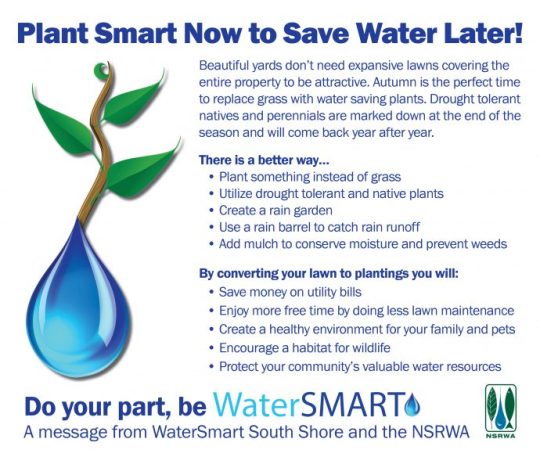

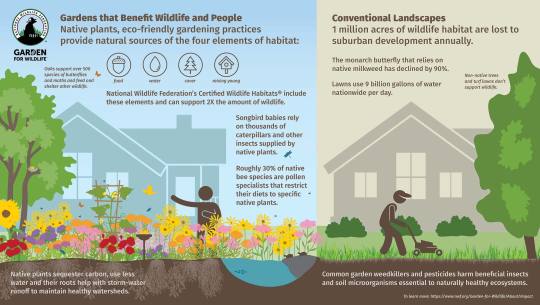


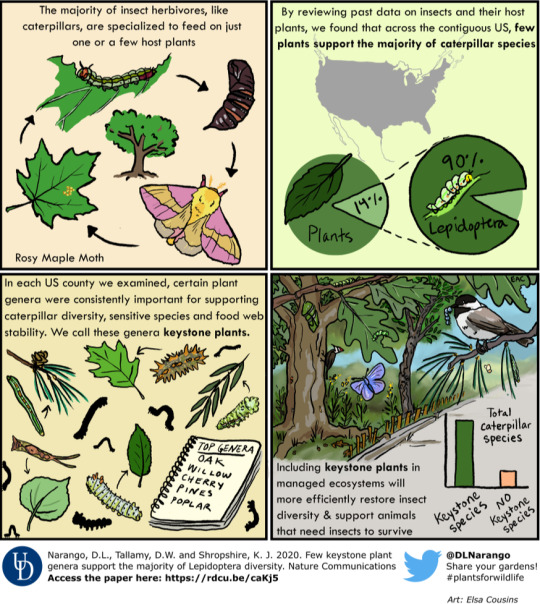

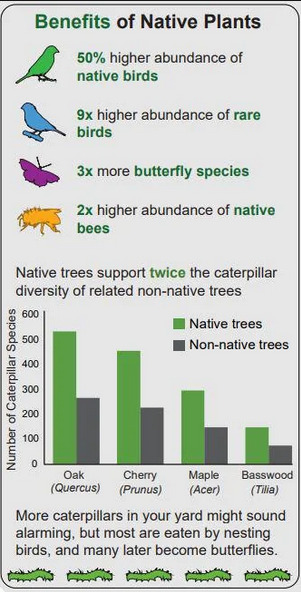

#gardening#water conservation#biodiversity#kill your lawn#native plants#native pollinators#pollinator garden#climate change#sustainability#environmental rehabilitation#habitat restoration#wildflowers#native flowers#animals#water crisis#didnt mean to post that grass one whoops. i think i skimmed it and wasnt thinking about it too much#but ig its true grass would be better than roads. lets just uh. make it native grass yaknow?
241 notes
·
View notes
Text
hey do you live in utah please take this survey!!! aug 2023
if you do please take this government survey about water usage, housing development, and public transit development in the near future!

particular things to watch for:
should we require low-water-use landscaping on new development
should we require existing wasteful landscaping for businesses and home developments be replaced with low-water-use landscaping
encouraging field fallowing -- currently utah's policy means a farmer can lose water rights on a field if they don't water it every year even if theyre not growing somwthing. fallowing would allow for people to let fields rest by not planting or watering on off years, massively reducing water waste
encouraging public transport in the form of fareless buses and trains, increasing pedestrian areas and bike lanes
reducing highway development thank god
developing dead malls and huge parking lots into more housing and pedestrian areas
please take it it's not terribly long and is pretty well formatted so it's easily digestible! utahs water policy and development has been ATROCIOUS lately this could really shape the future into something better. if u dont live in utah sharing would be appreciated <3
#birdenest#important#utah#water conservation#queerstake#<- i know a lot of those people live in utah so im tagging yall lol
140 notes
·
View notes
Text
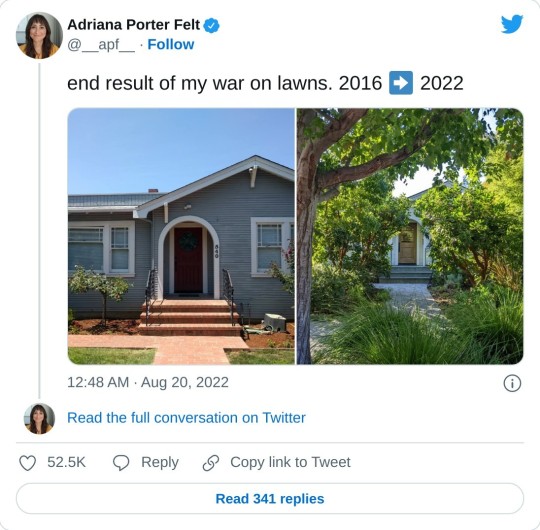
909 notes
·
View notes
Text
How to collect & use kitchen grey water to conserve water and water your garden all at once!
1. Soap* up/scrub your dishes:

2. Put a big pot in your sink:

3. Start rinsing your dishes:

4. Mmmm, dirty dish water**:

5. Let cool a bit if you used very hot water, then water plants of your choice***:

Do look up the grey water regulations in your area, at least so you know them. Read up a bit more on greywater systems. This may or may not be legal in your area, but understanding why it is or isn't can help you decide how to safely incorporate water reuse into your life.
One of the common big ones is that your not allowed to just let the water sit there, or pool on the ground. A common tactic is to divert the water below the surface of the soil, which can be accomplished easily. Some people don't want you to use kitchen grey water because of concerns around bacterial contamination from raw meat, etc, so consider how you're going to deal with that.
* don't use chlorine or borax (I don't know anyone who does for dishes, but you can't be sure on the internet). If you're quite concerned about your soap, get one that's labeled environmentally friendly or whatever.
** I'm a vegan so I don't have to worry about this, but if you're not, make sure you don't use waste water from dishes that had contact with raw meat or eggs. Because of potential bacterial contamination.
*** soap is basic, so don't water acid-loving plants with this. Never allow the water to pool for any length of time. Here you can see that I'm watering a cucurbit, which are thirsty plants that appreciate extra nutrients.
#solarpunk#practical solarpunk#solarpunk gardening#permaculture#greywater#graywater#the punk is because this isn't technically legal#but they also didn't make a law here specifically targeting this method#;)#water conservation#sustainable vegan#vegan gardening#vegan solarpunk
740 notes
·
View notes
Text
#good news#colorado#colorado river#water#water laws#water rights#water conservation#water is life#rivers#water protection#river protection#river conservation#usa#united states
101 notes
·
View notes
Text


Water Portraits.
©Robin Fifield 2023.
#robin fifield photography#photographers on tumblr#awehaven#andalucia#andalucia nature#water texture#save water#water#water photography#water conservation#recycle water
24 notes
·
View notes
Text
"Namibia is the driest country in Sub-Saharan Africa, and home to two of the world’s most ancient deserts, the Kalahari and the Namib. The capital, Windhoek, is sandwiched between them, 400 miles away from the nearest perennial river and more than 300 miles away from the coast. Water is in short supply.
It’s hard to imagine life thriving in Windhoek, yet 477,000 people call it home, and 99 per cent of them have access to drinking water thanks to technology pioneered 55 years ago on the outskirts of the city. Now, some of the world’s biggest cities are embracing this technology as they adapt to the harshest impacts of climate change. But Namibia leads the way.
How did this come about? In the 1950s, Windhoek’s natural resources struggled to cope with a rapidly growing population, and severe water shortages gripped the city. But disaster forced innovation, and in 1968 the Goreangab Water Reclamation Plant in Windhoek became the first place in the world to produce drinking water directly from sewage, a process known as direct potable reuse (DPR).
That may sound revolting, but it’s completely safe. Dr Lucas van Vuuren, who was among those who pioneered Windhoek’s reclamation system, once said that “water should not be judged by its history, but by its quality”. And DPR ensures quality.
This is done using a continuous multi-barrier treatment devised in Windhoek during eight years of pilot studies in the 1960s. This process – which has been upgraded four times since 1968 – eliminates pollutants and safeguards against pathogens by harnessing bacteria to digest the human waste and remove it from the water. This partly mimics what happens when water is recycled in nature, but Windhoek does it all in under 24 hours...
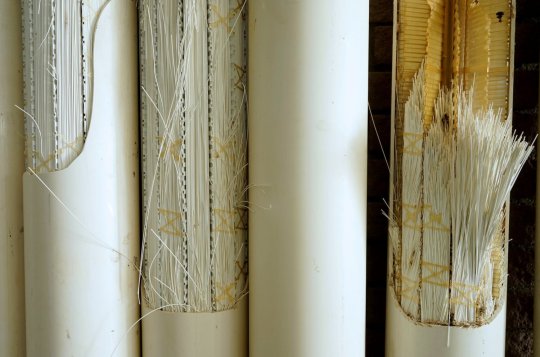
Pictured: These ultrafiltration membranes help to remove bacteria, viruses and pathogens. Image: Margaret Courtney-Clarke
“We know that we have antibiotics in the water, preservatives from cosmetics, anti-corrosion prevention chemicals from the dishwasher,” Honer explains. “We find them and we remove them.”
Honer adds that online instruments monitor the water continuously, and staff ensure that only drinking water that meets World Health Organisation (WHO) guidelines is sent to homes. If any inconsistencies are detected, the plant goes into recycle mode and distribution is halted until correct values are restored.
“The most important rule is, and was, and always will be ‘safety first’,” says Honer. The facility has never been linked to an outbreak of waterborne disease, and now produces up to 5.5m gallons of drinking water every day – up to 35 per cent of the city’s consumption.
Namibians couldn’t survive without it, and as water shortages grip the planet, Windhoek’s insights and experience are more important than ever.
Interest from superpowers across the globe
In recent years, delegations from the US, France, Germany, India, Australia, Singapore, and the United Arab Emirates have visited Windhoek seeking solutions to water shortages in their own countries.
Megadrought conditions have gripped the US since 2001, and the Colorado River – which provides 40 million people with drinking water – has been running at just 50 per cent of its traditional flow. As a result, several states including Texas, California, Arizona and Colorado are beginning to embrace DPR.
Troy Walker is a water reuse practice leader at Hazen and Sawyer, an environmental engineering firm helping Arizona to develop its DPR regulations. He visited Windhoek last year. “It was about being able to see the success of their system, and then looking at some of the technical details and how that might look in a US facility or an Australian facility,” he said. “[Windhoek] has helped drive a lot of discussion in industry. [Innovation] doesn’t all have to come out of California or Texas.”

Pictured: The internal pipes and workings of Namibia's DPR plant. As water becomes scarcer in some parts, countries are looking to DPR for solutions. Image: Margaret Courtney-Clarke
Namibia has also helped overcome the biggest obstacle to DPR – public acceptance. Disgust is a powerful emotion, and sensationalist ‘toilet to tap’ headlines have dismantled support for water reuse projects in the past. Unfortunately, DPR’s biggest strength is also its biggest weakness, as the speed at which water can re-enter the system makes it especially vulnerable to prejudice, causing regulators to hesitate. “Technology has never been the reason why these projects don’t get built – it’s always public or political opposition,” says Patsy Tennyson, vice president of Katz and Associates, an American firm that specialises in public outreach and communications.
That’s why just a handful of facilities worldwide are currently doing DPR, with Windhoek standing alongside smaller schemes in the Philippines, South Africa and a hybrid facility in Big Spring, Texas. But that’s all changing. Drought and increased water scarcity worldwide are forcing us to change the way we think about water.
Now, the US is ready to take the plunge, and in 2025, El Paso Water will begin operating the first ‘direct to distribution’ DPR facility in North America, turning up to 10m gallons of wasterwater per day into purified drinking water – twice as much as Windhoek. San Diego, Los Angeles, California, as well as Phoenix, Arizona are also exploring the technology."
Of course, DPR is not a silver bullet in the fight against climate change. It cannot create water out of thin air, and it will not facilitate endless growth. But it does help cities become more climate resilient by reducing their reliance on natural sources, such as the Colorado River.
As other nations follow in Namibia’s footsteps, Windhoek may no longer take the lead after almost six decades in front.
“But Windhoek was the first,” Honer reminds me. “No one can take that away.”"
-via Positive.News, August 30, 2023
#namibia#africa#desert#water shortage#water conservation#dpr#potable water#water recycling#clean water#drought#united states#colorado river#science and technology#sanitation#good news#hope
2K notes
·
View notes
Text
MODERN HISTORY
2-The Legacy of Wangari Maathai and The Green Belt Movement.
The Green Belt Movement (GBM) Foundation was founded by Professor Wangari Maathai in 1977 to address the needs of rural women in Kenya. Its focus on water conservation and tree planting grew into a global movement.

The Green Belt Movement (GBM) Foundation, founded by Professor Wangari Maathai in 1977, was born in response to the needs of rural women in Kenya. Focusing on water conservation and reforestation, the GBM empowered women to grow trees, restore land, store water, and secure food and fuel, thus addressing the scarcity of natural resources. As its work progressed, the WBG discovered deeper problems of disempowerment and disenfranchisement in communities, leading to the promotion of civic and environmental education.
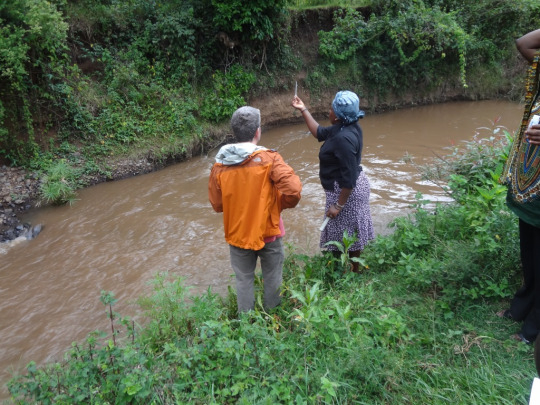
The Movement also became involved in advocating for democracy and fighting environmental degradation, expanding its influence internationally and collaborating with global conservation and sustainability initiatives. The legacy of Professor Maathai and the WBG is a testament to the power of community action in water conservation and social transformation.
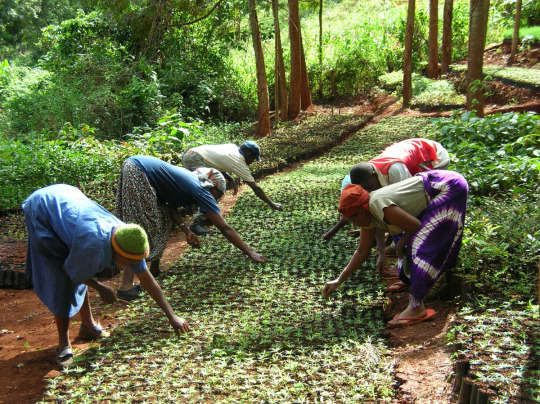
In conclusion, The Green Belt Movement and Professor Maathai's vision continue to be a testament to the power of community organizing and the idea that a community planting trees can make a difference. Her legacy persists in the struggle for environmental conservation and also water, democracy and community empowerment, just as Wangari envisioned.
11 notes
·
View notes
Text
why do we play golf on grass? That’s boring.
we could be playing golf in mountain preserves. swamps. Snowbanks that are perilously close to becoming an avalanche. The possibilities are endless, but we play on grass.
I think it would be more interesting to see 67 year old rob, a retired accountant, hit a ball up a desert mountain. Did your ball get stuck in a rock crack? Skill issue. Is your ball in the middle of a cholla? Good luck. Did a coyote run off with your ball? Better go catch it.
7 notes
·
View notes
Text
Gundam Wing: 3x4 tries to conserve water
TROWA Quatre is on an environmental conservation kick, so I suggested we shower together to save water.
DUO Ohhhhh I know exactly where this is going 😏
WUFEI *ignoring Duo* And how’d that work out?
TROWA The shower took three times as long as our separate showers combined would have taken and we wasted gallons upon gallons of water.
DUO 😏😏😏
WUFEI ...which is NOT good for the environment.
TROWA No it is not. Quatre doesn’t want to fool around with me in the shower anymore.
DUO Oh, dang, that sucks--
TROWA We’re going to fool around before the shower instead 😈
#gundam wing#3x4x3#troquat#trowa barton#duo maxwell#chang wufei#quatre raberba winner#quatre winner#mobile suit gundam wing#new mobile report gundam wing#inspired by#incorrectgundamwingquotes#water conservation#environmental conservation#if you squint and tilt your head this is almost foreshadowing for a future chapter of my fic#the original version of this scene went on a bit longer and included some 2x5x2 but it messed up the pacing :/#I'll make up for it in a future post I hope#gundam wing dialogue that never happened
15 notes
·
View notes
Photo

The curriculum has been created to teach, foster, and promote awareness of the global and environmental issues that impact all living beings that share planet Earth.
find it here at https://www.teacherspayteachers.com/Product/The-Earth-Studies-Curriculum-8918154 or at https://sharemylesson.com/teaching-resource/earth-studies-curriculum-402960
#earth science#environmental studies#nature studies#culture and society#ecology#ecosystems#water conservation#agriculture#farm workers#collectives#urban farming#lesson plan#activities#curriculum#social studies#social science
38 notes
·
View notes
Text
Huge backlog of 200 ships are stuck trying to enter the Panama Canal as they wait WEEKS amid slowed traffic due to drought: Delays set to wipe $200M off profits and cause spike in US grocery and parcel prices
The number of daily transits through the canal has been capped at 32 by water authorities in a bid to conserve water.
9 notes
·
View notes